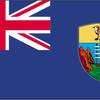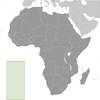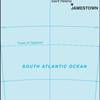Saint Helena, Ascension, and Tristan da Cunha [+]Compare [E]dit [H]istory
Object «Saint Helena, Ascension, and Tristan da Cunha» was created due to
Add new object to «Saint Helena, Ascension, and Tristan da Cunha» or move existing objects here.
Object «Saint Helena, Ascension, and Tristan da Cunha» has attributes [Show empty attributes][Hide empty attributes]
| Attribute | Value |
|---|---|
| Geography | |
| Area | 394 km² |
| Continent | Africa |
| Land area | 122 km² |
| Water area | 0 km² |
| Land boundaries | 0 km |
| Border countries | Add |
| Coastline | 60 km |
| Mean elevation | Add |
| Lowest point | 0 m |
| Highest point | 859 m |
| People | |
| Population | 7,862 |
| Official languages | Add |
| Religion | Protestant |
| Government | |
| Long country name | Saint Helena, Ascension, and Tristan da Cunha |
| Short country name | Add |
| Long local name | Add |
| Short local name | Add |
| Former name | Add |
| Government type | Parliamentary democracy |
| Capital | Jamestown |
| Economy | |
| GDP (PPP) | 31,100,000 USD |
| GDP (OER) | Add |
| GDP (real growth rate) | Add |
| GDP - per capita (PPP) | 7,800 USD |
| Gross national saving | Add |
| Labor force | 2,486 |
| Unemployment rate | 14 % |
| Population below poverty line | Add |
| Budget revenues | 8,427,000 USD |
| Budget expenditures | 20,700,000 USD |
| Military expenditures | Add |
| Taxes and other revenues | Add |
| Budget surplus or deficit | Add |
| Public debt | Add |
| Inflation rate | 4 % |
| Central bank discount rate | Add |
| Commercial bank prime lending rate | Add |
| Stock of narrow money | Add |
| Stock of broad money | Add |
| Stock of domestic credit | Add |
| Market value of publicly traded shares | Add |
| Current account balance | Add |
| Exports | 19,000,000 USD |
| Imports | 20,530,000 USD |
| Reserves of foreign exchange and gold | Add |
| External debt | Add |
| National currency | Saint Helenian pounds |
| National currency (code) | SHP |
| National currency (symbol) | £ |
| National currency rate to USD | 0.7836 |
Saint Helena is a British Overseas Territory consisting of Saint Helena and Ascension Islands, and the island group of Tristan da Cunha. Saint Helena: Uninhabited when first discovered by the Portuguese in 1502, Saint Helena was garrisoned by the British during the 17th century. It acquired fame as the place of Napoleon BONAPARTE's exile from 1815 until his death in 1821, but its importance as a port of call declined after the opening of the Suez Canal in 1869. During the Anglo-Boer War in South Africa, several thousand Boer prisoners were confined on the island between 1900 and 1903.; Saint Helena is one of the most remote populated places in the world. The British Government committed to building an airport on Saint Helena in 2005. After more than a decade of delays and construction, a commercial air service to South Africa via Namibia was inaugurated in October of 2017. The weekly service to Saint Helena from Johannesburg via Windhoek in Namibia takes just over six hours (including the refueling stop in Windhoek) and replaces the mail ship that had made a five-day journey to the island every three weeks.; Ascension Island: This barren and uninhabited island was discovered and named by the Portuguese in 1503. The British garrisoned the island in 1815 to prevent a rescue of Napoleon from Saint Helena. It served as a provisioning station for the Royal Navy's West Africa Squadron on anti-slavery patrol. The island remained under Admiralty control until 1922, when it became a dependency of Saint Helena. During World War II, the UK permitted the US to construct an airfield on Ascension in support of transatlantic flights to Africa and anti-submarine operations in the South Atlantic. In the 1960s the island became an important space tracking station for the US. In 1982, Ascension was an essential staging area for British forces during the Falklands War. It remains a critical refueling point in the air-bridge from the UK to the South Atlantic.; The island hosts one of four dedicated ground antennas that assist in the operation of the Global Positioning System (GPS) navigation system (the others are on Diego Garcia (British Indian Ocean Territory), Kwajalein (Marshall Islands), and at Cape Canaveral, Florida (US)). NASA and the US Air Force also operate a Meter-Class Autonomous Telescope (MCAT) on Ascension as part of the deep space surveillance system for tracking orbital debris, which can be a hazard to spacecraft and astronauts. Tristan da Cunha: The island group consists of Tristan da Cunha, Nightingale, Inaccessible, and Gough Islands. Tristan da Cunha, named after its Portuguese discoverer (1506), was garrisoned by the British in 1816 to prevent any attempt to rescue Napoleon from Saint Helena. Gough and Inaccessible Islands have been designated World Heritage Sites. South Africa leases a site for a meteorological station on Gough Island.
Similar objects
- [⇄] [+] American Samoa
- [⇄] [+] Kiribati
- [⇄] [+] Lesotho
- [⇄] [+] Nauru
- [⇄] [+] Turks and Caicos Islands
Most often compared with
- [⇄] [+] Nauru
- [⇄] [+] Turks and Caicos Islands
- [⇄] [+] Lesotho
- [⇄] [+] American Samoa
- [⇄] [+] Kiribati
Everyone can something to edit or add.
There was one edit, no edits waiting approval. Last edited by mann.zelma(9435), Sep 16, 2019 (38 fields were changed)
Help · Contact us · Disclaimer · Contributors · Developers · Donate


